
I made $357 from walking today.
I’m not a professional athlete, I don’t have sponsors, I didn’t have to get a brand tattooed on my forehead. I was using STEPN, a new Web3 Fitness app.
STEPN allows you to earn crypto from walking, jogging, and running. They’ve gamified fitness with a “Move-to-Earn” model (Play-to-Earn with extra steps) where the app is able to track your exercise similar to Strava or Map My Run, then reward you with crypto for completing activities.
To play, you need their special sneaker NFTs. These NFTs have various attributes that affect how quickly and efficiently they earn crypto, and yes, there’s sneaker breeding.
After playing for about two weeks now, I’m regularly earning $300-400 a day. That’s a six figure salary just for going outside and spending time with my wife, kid, and dogs.
That’s completely insane, totally unsustainable, and a giant ponzi waiting to collapse.
Right?
This one’s… weird. There’s something here. Something that I honestly haven’t seen with any other Web3 game. STEPN might be the best designed Play-and-Earn game to hit the market, and the more I dig in, the more excited I get about what they could be in the future.
This article is a marathon, not a sprint. We’re going to cover:
- How STEPN Works
- How to Get Started
- Their Tokenomics
- The STEPN Bear Case
- The STEPN Bull Case
- My Investing & Playing Strategy
- What to Watch
Also a quick thank you to Matthew Barby of the Decrypting Crypto Podcast for turning me on to STEPN, giving me some initial advice on getting started, and answering my many questions about the game.
How STEPN Works
You use STEPN similar to how you would use any other running app like Strava.
When you want to go for a walk, jog, or run, you open the app, select the sneaker that corresponds to the speed you’re going to exercise at, and hit start. The app starts tracking your movement and steps, and awards you GST (their in-game token) based on the duration of your activity.
The longer you exercise for, the more GST you earn. It doesn’t matter how fast you move, so long as you’re within the acceptable speed range for the shoe you’re wearing (you can’t run with your walking shoes on, for example).
As you earn GST, you can reinvest it into your shoe to increase its earning potential. You spend GST to level up your shoe, and each time it levels up, you get to increase its stats. The four stats are:
- Efficiency: How much GST you earn
- Luck: How likely you are to get a mystery box
- Comfort: How much GMT you earn after level 30
- Resilience: How slowly your sneaker degrades
Your shoe also wears down as you use it, and you’ll need to spend GST to repair it. The higher your resilience, the slower it will wear down.
Then the final thing you can spend GST on for your sneaker is minting. If you have two sneakers at level 5, you can spend GST to mint a new sneaker. Minting more sneakers is helpful since the number of sneakers you own determines how much energy you get per day:
As you can see, the additional energy you get per sneaker trends down over time:
- From 0 -> 1, each sneaker is worth 2 energy
- From 1 -> 3, each sneaker is worth 1 energy
- From 3 -> 9, each is worth 0.833 energy
- From 9 -> 15, each is worth 0.5 energy
- From 15 -> 30, each is worth .533 energy
Each energy only gives you so much activity time. So if you have 1 sneaker, you only get to earn for 10 minutes. With 9, you get 45 minutes of Move and Earn time. Getting to 9 sneakers makes sense, then it quickly dies off after that. But having a small army of people with 1 sneaker each would technically be the most efficient.
A basic walker will earn 5 GST per 1 energy, so at today’s price of $4.80, that’s $24 per energy. If you bought the cheapest walker for 10 SOL, approximately $1,050, you could earn that back in about 22 days. Plus you’d still have the sneaker which should be worth the same amount. Imagine if driving your car for 22 days earned you the initial cost of the car!
But that’s assuming you sell your GST as soon as you earn it. And despite the high value of GST, it’s tempting to use it instead of sell it.
You’ll want to invest some into leveling up your sneaker so it can earn more and doesn’t wear down as fast. And you’ll have to spend some GST on repairing it. And you might want to save up so you can mint more sneakers. The game is very good at hooking you into spending your GST within the system instead of selling it.
But the biggest thing you’ll spend GST on is minting. Minting is STEPNs version of breeding, and it lets you create a new shoe from two of the shoes you already have.
The math on breeding is quite good. It currently costs 200 GST to mint from two commons, and you’ll most likely get another common which will be worth 10-12 SOL. So you’re spending $960 to make $1,050. But you can’t do this forever, since the cost increases after the first two mints, and you need to get a sneaker to level 5 before you can mint with it. So there are some checks in place to prevent runaway sneaker breeding.
In addition to those primary earning elements, they also have a few lottery systems that add to the fun, and make it a little tougher to do simple math on the ROI of various activities.
One of those lottery systems is Mystery Boxes. If you use more energy, and have a high Luck score on your shoe, you have a chance of getting a mystery box at the end of your run. These boxes contain gems, which you can sell on the marketplace or put into your shoes to increase their stats. My runner, for example, has an efficiency gem which is increasing its efficiency by 2.
Shoe minting also has some lottery elements attached. When you combine two shoes to mint a new one, what you actually get is a shoebox:
Then when you open the shoebox, you have a chance of getting a different rarity shoe than the shoebox:
And the type of shoe (Walker, Jogger, Runner, Trainer) also affects what type of shoe you unbox:
So it’s not as simple as two common walkers making a new common walker. That’s most likely to happen, but you could get something else entirely! And that chance of getting a super valuable Uncommon or Rare, or getting a Trainer from your Runner (typically Trainers are the most expensive, Runners the least) adds an interesting element of luck to the whole thing.
Your typical workflow to maximize your earnings then is to use up your energy every day, maximizing the GST you earn. Then you spend that GST leveling up your shoes, and when you have two shoes at level 5, you spend GST to mint a new one. Then you can sell a shoe, or save the new one for your collection to try to increase the amount of energy you have. And at some point if you get bored of minting, you can just sell your daily GST earnings.
Getting paid to walk your dog while breeding imaginary sneakers sounds pretty sweet. How do you get all of this started though?
Getting Started with STEPN
STEPN is a crypto game, so you need some crypto to play. Specifically you need some SOL on the Solana network. If you’re not already set up on Solana, I have an article for that.
You’re going to need about 11 to 12 SOL minimum. This is a meaningful upfront cost just to play a game, and I know it will price a lot of people out. STEPN is releasing sneaker “leasing” where you can borrow someone else’s sneakers and split the earnings with them, but that’s not out yet, so if you want to play for free you’ll have to wait a few months.
If you do want to play now though, you’ll need the STEPN app next. Go to your app store, download STEPN, and create an account.
Now the big barrier you’re going to run into is the Activation Code. You need to get one from someone else who’s playing the game if you want to play. Everyone who already has STEPN gets one activation code per 10 energy they spend exercising, assuming their last code has been used. Here’s one for whoever finds it first: 72886319.
You can ask in the STEPN Discord for a code, but it’s kinda chaotic. Your best bet is to find a friend who you can ask for one. I’m trying to get a batch for the newsletter as well, and I’ll let you know if I do. It’s a pretty clever system honestly, but makes it hard for me to share codes in a newsletter format like this. I will also periodically share them on my Twitter.
Assuming you’re able to get an activation code, then what? Next you’ll set up a wallet in the app which you can send your Solana to for buying sneakers with. You could import your existing wallet into the app, but that’s not particularly good security so I recommend making a new one in their app like they recommend.
Once that’s done, you can transfer in some SOL, then transfer it from your Wallet to your Spending account.
The Spending account is basically an off-chain wallet within the game where you can spend SOL and GST for all your game activities. You can buy sneakers with SOL right in their marketplace within the app, without having to confirm transactions or anything. It’s quite slick. One of the better off-chain to on-chain bridges in an app that I’ve seen.
So once you’ve deposited your SOL to your wallet, and sent it into your spending account, you’ll need a sneaker. Maybe multiple depending on how much daily energy you want. If you want my specific strategy, scroll down to that section of this post.
Now here’s the next barrier: sneakers are expensive. They’re going to introduce Renting at some point, where you can just rent someone else’s shoes and share the proceeds with them, but until then you have to buy them.
The most basic shoe, with 0 mints and 0 levels, will currently cost 12.5 SOL depending on what speed you get. If you get one that already has 2 mints, you can usually save 1 or 2 SOL, but you won’t be able to mint as cheaply with it.
You also have to decide what kind of sneaker you want. Runners require you to actually run (8-20 km/hr). Walkers let you walk (1-6 km/hr). And Joggers are in the middle (4-10 km/hr). If you move outside this speed range when exercising you stop earning, so it’s important to pick the right one for how you want to play.
If you just want one sneaker, you’re looking at a $1,000 investment. If you want 20 minutes of activity, you need 3 sneakers, so $3,000. And if you want any uncommon or rare sneakers which can potentially earn much more, you’re looking at a significantly larger investment still. This is also the primary way STEPN makes money. They take a cut of all marketplace fees.
When I started playing, I bought about $12,000 of sneakers. I know that’s kinda absurd, but it got me an uncommon walker and runner, as well as some commons for minting with. Your number of shoes and their levels determine how much energy you have and what your max GST earnings per day are, so having more and leveling them up makes a big difference.
If the sneaker price sustains for a while, I’ll make that back. But I also could have bought the top and it’s about to crash. Who knows! Crypto is exciting, right?
Anyway, once you have your sneakers, you’re ready to roll! Pick the pair you want to exercise with, hit start, and get moving. You’ll see your rewards accruing as you walk, jog, or run.
From there, you’ll just have to decide how to use the GST you’re earning. Do you level your sneakers up? Try minting new ones? Sell it as soon as you get it? It’s all part of the game.
Obviously the long term sustainability of this game relies heavily on their tokenomics, so let’s look at that next. How do their two tokens: GST and GMT work?
STEPN Tokenomics
Like Axie, Crypto Raiders, and many games coming into the crypto market, STEPN has a two token model:
- GMT is their governance and value token
- GST is their in-game spending token
You primarily earn GST from playing the game (though you can eventually earn GMT too), and need to spend it in order to make progress. GMT you can hold as an investment, and will apparently need to spend for certain in-game activities in the future as well (though this is not implemented).
Let’s start with GST since that’s the one you’ll interact with much more in the game economy at first.
GST Tokenomics
As soon as you start playing STEPN, you’re earning GST. You earn GST for each minute of activity, depending on the Efficiency of your shoe.
At the token level, GST is simple. It’s an infinite supply token with constant minting and burning, and it’s not something you should hold as a long term investment. Keep enough for the next use case in the game, and sell the rest.
The in-game economy around GST is more interesting than the on-chain tokenomics. A walker with 0 efficiency earns about 1 GST per minute, while a runner with 0 efficiency earns 1.3 per minute.
This is the only “faucet” for GST right now. All GST has to be created by someone going out and walking, jogging or running. As far as I know they don’t sell any into the market, or emit any through other means.
Why is GST valuable though? Right now GST is trading between $4 and $5 most days, which seems insanely high given you can earn 1 per minute while you have energy.
But people are buying it because you need GST in order to do anything else in the STEPN economy. Specifically:
- To level up your sneakers
- To mint new sneakers
- To repair your shoes
- To unlock gem sockets
- To create better gems
- To speed up mystery box openings
All of these use cases increase the amount of GST or other rewards you earn. So while you could just buy a level 0 sneaker, exercise with it every day, and sell your GST on the market, you might do better by investing more into the game first.
For example, my walkers are level 15 and currently earn 1.4 GST per minute instead of just 1. So by leveling them up over the course of two weeks, I’ve increased their earning rate by 40%.
It costs a total of 145 GST to get to level 15. So after 362 minutes of activity, I’ll have gotten to ROI positive on that investment. I can do 55 minutes of activity per day, so it’ll take me about a week to pay that investment off. That’s pretty good.
You also have to repair your shoes periodically if you want to keep earning with them. When they get below 50 durability, they lose 10% of their earning power. When they get below 10%, they lose 90% of their earnings. So you’ll have to repair them, and that can get expensive. I repaired my runners last night from 50 to 100, and it cost 31 GST.
The big cost is minting though. If you want to mint a new sneaker from two commons, it’s going to cost 200 GST. If you want to mint using two uncommons, it’s 800 GST! So like other games, creating new NFTs is still the big sink.
The variety of sinks is one area where STEPN does a much better job than many other games though. Minting is still the big source of ROI, but they have many many other uses for GST besides just minting. They’re pulling a lot of it out of circulation without increasing the amount of sneakers in circulation, which is great for the sneaker values and sustainability of the game.
But, every way of using GST increases how much GST you can earn, which is obviously a big problem. That can’t go on forever without crashing in some horrific way, so they’ll need to figure out other ways to pull GST out of the system soon to prevent a future meltdown.
We’ll talk about that a bit more in the bull and bear cases. Let’s now cover GMT.
GMT Tokenomics
GMT is the governance and value token for the STEPN ecosystem. It’s the one that’s more like holding stock in the company, so if you want to invest in their token, this is the one you’re looking for.
Their litepaper shares quite a bit of information about how it’s unlocking. Their allocation is typical, maybe a little light on the community allocation but still pretty good:
- 30% to Move and Earn
- 30% to Ecosystem / Treasury (unclear how this gets used)
- 16.3% to Private Sale
- 14.2% to Team
- 7% to Binance Launchpad Sale (public sale)
- 2.5% to Advisors
7% sold publicly, 30% being given away for free, another 30% being used for operations which usually means being sold at local tops to create treasury diversification, and then 33% held by investors, advisors, and team members.
As I covered in the Supply piece of my Tokenomics series (tk), the way these tokens are emitted makes a big difference. STEPN provides a handy interactive graph to explain all this, including what % of tokens have been released to each group for any month in the future. This is phenomenally transparent and useful, I wish every team did this:
One thing that immediately stands out is their private round tokens are vested over three years, and they don’t start unlocking until 2023. That is honestly kinda insane. I rarely see 3 year vesting with a 1 year cliff on crypto projects, and it shows how committed STEPNs investors are to the long term.
Once 2023 arrives, there will always be more tokens held by investors and team members than the public, but that’s normal. The slowness of their token emissions, and having it planned out over 8 years, makes me more bullish on the value than the average project. Especially the average Solana project.
The other interesting thing about GMT is that it will have some utility in the game. They just expanded their GMT tokenomics on the site, and it seems like in the future you’ll be able to (or have to) use it for certain things like:
- Reaching level 5/10/20/29/30
- Upgrading Level 4+ Gems
- Minting Rare, Epic & Legendary Sneakers
- Redistributing Attribute points
- Increasing your GST Earning Cap
- Improving the success rate of ALL Gem upgrade
- Improving the chance to receive a higher quality Sneaker from opening Shoebox
- Improving the chance to receive two Sneakers from minting
I cover this more in the Investing section, but I don’t necessarily think that means it’s a good investment right now. We’ll come back to it.
The last bit of tokenomics we need to cover are the sneakers. They’re tokens too!
Sneaker Tokenomics
This is where STEPN runs into some problems. To their credit, it takes a while to make a new sneaker. And it’s expensive. But they have a runaway sneaker breeding problem which they’ll have to address eventually.
You can’t let players mint new NFTs forever and expect them to hold their value. There has to be some sort of burn mechanism in place for all the excess sneakers, or else they’ll become worthless eventually.
This problem has plagued Axie, and it might have been avoidable if they’d planned some sorta death mechanic for Axies from the get-go. To give you a sense of the severity, last summer the cheapest Axie went for ~$300. Now they go for ~$22.
I also generally have some concern around P&E games storing most of the value in the NFTs you need to play. This is a model we’ve avoided at Crypto Raiders because we don’t want the game to be prohibitively expensive to join. Genopets is taking another version of this approach, too. So it’ll be interesting to see how the sneaker prices change over time. I’ll write more about this particular issue in a future newsletter.
Alright, we know how the game works, how to start playing, and how their economy works. Let’s talk about the bear and bull case for this, because I know it’s going to get crazy over the next few months.
The STEPN Bear Case
I said this in the intro, but the fact that I can earn $400 per day walking my dogs is insane.
The only reason I can make that much is because other people are willing to pay that much for the GST I’m earning on my walks.
The only reason they’re willing to pay that much for GST is because they can get a ~20% ROI on using that GST to mint new sneakers, which they can sell to other players.
The only reason those other players are buying sneakers is because they read an article like this telling them they can earn $400 per day walking their dog.
This can go on forever, right? Nothing concerning here? Super duper sustainable, it’s the new economy, baby! Why would you take any normal job when you can go walk around outside and earn hundreds of dollars a day?
Obviously, something will have to be corrected here. It’s not quite a pyramid scheme or ponzi, but it’s darn close. The only way everyone keeps making money is if other people keep putting more money into the system, which either requires more people or deeper pockets from existing people.
So how does this collapse? Well as more people enter the game, the demand for sneakers will continue to grow. That growth can sustain the current prices for a while, they’ve actually trended upwards since I started playing. But they can’t go on forever since there’s almost nothing in the game that’s ROI negative.
So eventually, one of two things will happen:
- Too many people will be minting sneakers, and there won’t be enough new demand to sustain the prices and sneaker prices will fall
- Too many people will have high level sneaker with high earnings, and the GST price will fall
Once one of those starts to happen, the Play-to-Earn doom cycle will be in full effect. People will see the floor price on sneakers dropping. They’ll dump their sneakers on the market to try to lock in the crazy ROI they’ve been imagining for months. It’ll be a fast and brutal race to the bottom.
At the end of it, the prices could be 1/10th of where they started. Maybe lower.
The question is, where are we in that cycle? As with most things, the earlier you are, the safer you are. People who are already playing right now might do quite well. But if this pricing continues for a couple months and then new people join, those new people could be the exit liquidity.
This is the “meta game” of STEPN: how long can you milk the magic money machine before it all comes crashing down? And can they fix their doom loop before it gets triggered?
If you aren’t comfortable with the prospect of waking up tomorrow and seeing your imaginary sneakers are suddenly worthless, you shouldn’t play.
There is currently no mechanic in the game to escape this implosion, and unless they implement some creative improvements to their economics, it will break down eventually.
Also Apple might just randomly decide to pull them from the app store and destroy everything. So that’s nice.
And this is the part where I could get all self righteous and talk about how selfish and reprehensible you must be to participate in a game where you know it’s an unsustainable flywheel like this, and you should be above that, etc., etc. but hey, if you know the risks, and you’re being smart, go for it. It’s a game, after all. Don’t put in money you can’t afford to lose, take chips off the table, and have fun.
Okay that’s the bear case, what’s the bull case?
The STEPN Bull Case
I’ve been working in crypto for a bit over a year now. About half of my friends are involved in crypto to some extent or another at this point, and they’re almost exclusively men.
This is the first time my wife has been interested in crypto. It’s the first time my non-crypto friends have been interested in crypto. It’s the first time my crypto guy friends’ partners have been interested in crypto.
I have never seen a crypto application generate this much outside interest. My wife has been posting her STEPN walks on Instagram, and she gets tons of DMs from friends who aren’t involved in crypto at all asking about how to get setup and play.
One of my theses with crypto has been that gaming would be what brings in masses of retail users. We saw an early version of that with Axie, but we might see a much bigger version of that with STEPN and other games coming out this year.
In the last two weeks, I’ve gotten half a dozen friends set up on STEPN, a number of them never having done anything in crypto before. We have group chats where we talk strategy and share our exercises. We go on walks together to hang out and level up our imaginary sneakers.
It sounds so embarrassingly stupid to say this, but STEPN is literally making me a better person. My dogs get walked more, I get outside more, my wife and I take breaks from work to get some fresh air. I’m cringing at myself saying this but here we are.
I’m not the only one, too. The STEPN Discord is full of people talking about how it has helped them lose weight, live a better lifestyle, spend more time with their dogs and families. I’m sure there’s some dark interpretation here about how our collective obsession with money is the only force strong enough to drive us to make positive changes but who cares. I’m having a ton of fun with it, my friends are having fun, people are being healthier, and we’re making money from it.
The and is really important here. A crypto game has to be a game first. If it’s not something fun to play on its own, without high earning potential, it’s not gonna make it. STEPN is fun. Leveling up your sneakers is fun. Mystery boxes are fun. Optimizing your energy is fun. Minting is fun. It’s addicting, and not just because there’s money attached. It might be the first fun retail-focused crypto game.
That’s all well and good, but what about the doom cycle? I fully believe what I laid out in the bear case. If STEPN doesn’t fix their economics, it will eventually implode in some awful way. And then I’ll have to deal with a bunch of angry texts from friends who didn’t take money off the table.
Can STEPN avoid imploding? Yes, and it’s because they’re a fun, status-enhancing app that they can do it.
I’m training for a marathon right now, and my app of choice for tracking exercise is Strava. It’s a great app for recording your exercises, and it also has a number of social elements attached to it. Your friends see when you worked out, and they can like and comment and do all the normal things you expect from a social app.
But Strava is for fitness nerds. It’s for triathletes, runners, people who already regularly exercise. No one is posting their 10 minute walks on Strava, because taking short walks isn’t cool. STEPN can make walking cool. STEPN can make all exercise more cool.
By building out their social elements (which are coming after the game is more flushed out), STEPN has the opportunity to build the first fitness app for non-athletes. It feels meaningful that they went with the name “STEPN” instead of “RUN’N.” It’s for casual use, not necessarily athletes.
Once there are social elements, status signaling becomes more valuable. Right now the main way you flex in STEPN is with the rarity, level, and earnings of your shoes. But that’s just the start. There can be many additional ways you can earn status in STEPN, akin to unlocking cosmetic skins in a game like Fortnite.
Non-gamers often think cosmetics are stupid. Why would someone pay a bunch of money just for a different look in a game which gives them no competitive benefit? Well it turns out people care a lot about status signaling and individuality, to the tune of billions of dollars per year.
If people are spending billions of dollars per year to look different in a game where you mostly shoot each other, how much will they spend to look different in a game where you also get to show off how healthy of a person you’re being?
How much will people spend on custom shoes, backgrounds, reactions, stickers, emojis? There are so many ways STEPN can allow users to enhance their status and claim individuality while also feeling good about themselves. And they can price everything in GST, taking a 4-6% cut of every transaction, and earning free interest on the SOL you’ve stored in the game.
This is how STEPN escapes the NFT breeding ponzinomics. If all the uses of GST help you earn more GST, they’re headed for disaster. But once you can spend GST to enhance your status in ways that don’t allow you to earn more, they might just make it.
And there’s no reason they have to stop with walking and running. Those are just the easiest to verify. But they could build tracking for biking, swimming, skiing. They could buy a hardware company to start making gym equipment.
By focusing on casual activity, walking, and getting people hooked on it through crypto incentives, they could build the killer fitness app that actually helps people build a healthier lifestyle.
I can’t understate how strong the pull is to buy more sneakers so I can spend more time walking and running so I can earn more magical internet money so I can buy more sneakers. If they can keep that feeling going, and manage their economy properly, this could honestly be crypto’s killer app.
BUT! There are a lot of ifs there!
It might not be STEPN, they might crash and burn and someone else picks up the mess and does it better.
They might open up sign ups too early and send the economy spiraling out of control.
Apple might decide to pull them from the app store and send it all to zero (this is probably my biggest fear).
If they nail it though… oh boy there’s something here.
I’m insanely bullish on STEPN. And I think one of the reasons it’s working, and can work for a while, is the signup gating with activation codes.
If they open up signups to everyone before they figure out ROI negative GST sinks, they’re probably screwed. It’ll grow too hot too fast and flame out. They have an incredible opportunity hanging in a very delicate balance, and I’m rooting hard for them to pull it off.
But, again, this is crypto. Shit breaks. Apple could remove them. Solana could melt down. Someone could hack their bridge.
This is not a free lunch, and if you’re gonna play, you gotta be smart about it. Take money off the table, keep the risks in perspective, and don’t put anything at risk you aren’t prepared to lose.
So speaking of that, what am I doing with my money in the game?
My Investing & Playing Strategy for STEPN
As usual, what I’m doing with my money is in the paid addendum to this post.
The one thing I’ll mention in the free part here is: you probably don’t want to buy GMT right now. If you’re not sure why, check out my Tokenomics series again. Especially the Supply one.
Will STEPN Bring Crypto to the Masses?
I’m excited about STEPN because I do honestly think it could be both a revolutionary fitness app, and it could be the first app that brings a massive number of non-crypto people on-chain.
My non-crypto friends don’t care about fancy DeFi products or confusing liquidity optimization processes. But they’re very interested in making money from walking. And once they have some SOL and USDC sitting in a wallet, maybe they want to explore how to earn interest on it or borrow against it. DeFi gets more interesting once you have some skin in the game.
STEPN has a big challenge ahead of it. The concerns I laid out in the bear case are, I believe, very legitimate, and could bring it down if they’re not properly managed. This is an unstable economy right now. You can make a lot of money playing, yes, but it could go to zero any minute. Please be responsible if you’re going to play. None of this is financial advice and just because I yolo’d some SOL into it doesn’t mean you should too.
But there’s also something to the bull case. If they can get people excited about going for walks and being healthier and create a whole status economy around it, that’s kinda magical. That could be one of the biggest crypto projects in the market.
The main thing I’m watching is their activation code strategy. If that changes, that could precipitate a big shift in the market, and opening their doors fully is going to be the thing they have to be most careful with.
I’m really rooting for STEPN. I’ll definitely be playing more and growing my sneaker collection, and I’m excited for their future features like achievements, challenges, and rentals. And for when the social elements are rolled out and we can start flexing our cool sneakers.
It might just be the first crypto app with mass appeal.
My STEPN Strategy
As I said, I’ve sunk about $12,000 into STEPN. So where do I see the opportunities?
First, I’m not buying GMT. Their FDV is $13b which is higher than Axie, and they only have 10% of their tokens in circulation. That feels insanely high, and is probably inflated by the current hype around the game. If I buy any GMT, I’ll wait until there’s more of a correction. It just feels too hot right now.
What I did buy are sneakers. On Matthew Barby’s advice, I picked up two uncommons (one walker, and one runner), and then four common sneakers.
With six shoes I had 4 energy, and then with 2 uncommons I got 2 more energy bringing me to 6 energy total, enough for 30 minutes of activity.
Then I minted a couple and bought a couple more, to get me to 9 sneakers.
Now that I’m at 9 sneakers, my whole strategy revolves around earning GST to level up my two uncommons, and spending the rest of minting using my common sneakers.
Leveling can make sneakers significantly more valuable. I bought my uncommon walkers for about 60 SOL, and now that I’ve gotten them to level 15 they’re worth about 90 SOL. I only invested about 6-7 SOL worth of GST leveling them up, so that’s a pretty wild ROI for two weeks.
But I’m just continuing to level them up and invest in stats so I can earn more, so I can do more minting. At this point I can mint a new sneaker every 3 days or so, and then I sell one of the sneakers I used for minting. This way I always have new sneakers with fewer than 2 mints, so I can always mint new ones for 200 GST.
That means every 3 days or so I’m selling a sneaker for about 11 SOL, so I’m earning almost 4 SOL per day. And I’m leveling up my uncommons along the way, so they’re getting more valuable. I’m also starting to augment this strategy by spending SOL to buy GST to make up the difference I need to do a mint, then quickly minting and flipping to repay the “borrowed” SOL. This just makes the cycle move a little fast and juices the earnings a bit.
Mystery boxes are a nice bonus, too. If you spend more than 5 energy in a session, and you have a luck score of at least 20-30, you’re almost guaranteed to get a mystery box. I’m not 100% sure how you get higher level mystery boxes, though it seems to just be a factor of having higher luck and doing a longer exercise.
Mystery boxes are great though since they have gems, and depending on the gem, you can often sell it for .2 to .8 SOL. If your slots are always full you’ll open a mystery box every other day or so, so that’s an extra .1 to .5 SOL per day.
Now that I’m at 9 sneakers, my focus is on earning back my investment. Once I’ve recouped 100 SOL, I’ll likely try to grow my sneaker collection to 15. It’s not as efficient to have that many, but I’m actually walking and running more than I have energy for, so I think it’s worth it for the extra earnings.
When would I sell? If I get bored and stop playing, I’d definitely sell then. Or if it seems like they’re going to turn off codes and let everyone in, that would be a concern.
As for GMT, I don’t feel compelled to buy it in the near term. 13b FDV is insane, and with a 10 year emission schedule, there will be some good opportunities to buy it later. In the meantime I’m just going to use STEPN as a way to grow the size of my SOL stack.
And to have fun spending time outside with my family.
The Only Subscription
You Need to
Stay at the
Edge of AI
The essential toolkit for those shaping the future
"This might be the best value you
can get from an AI subscription."
- Jay S.
Join 100,000+ leaders, builders, and innovators

Email address
Already have an account? Sign in
What is included in a subscription?
Daily insights from AI pioneers + early access to powerful AI tools
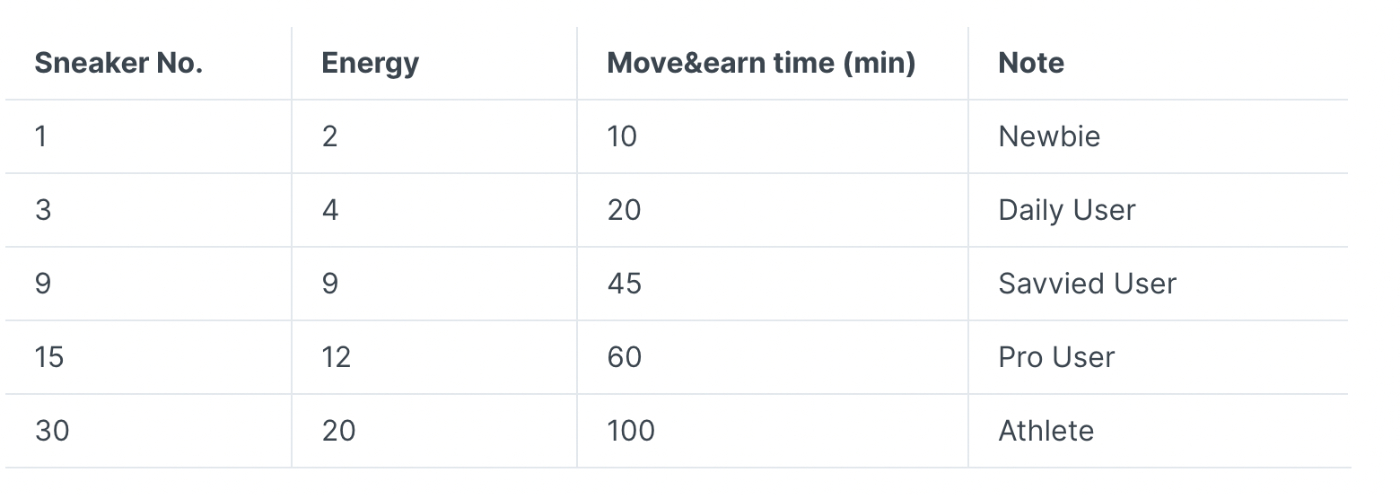
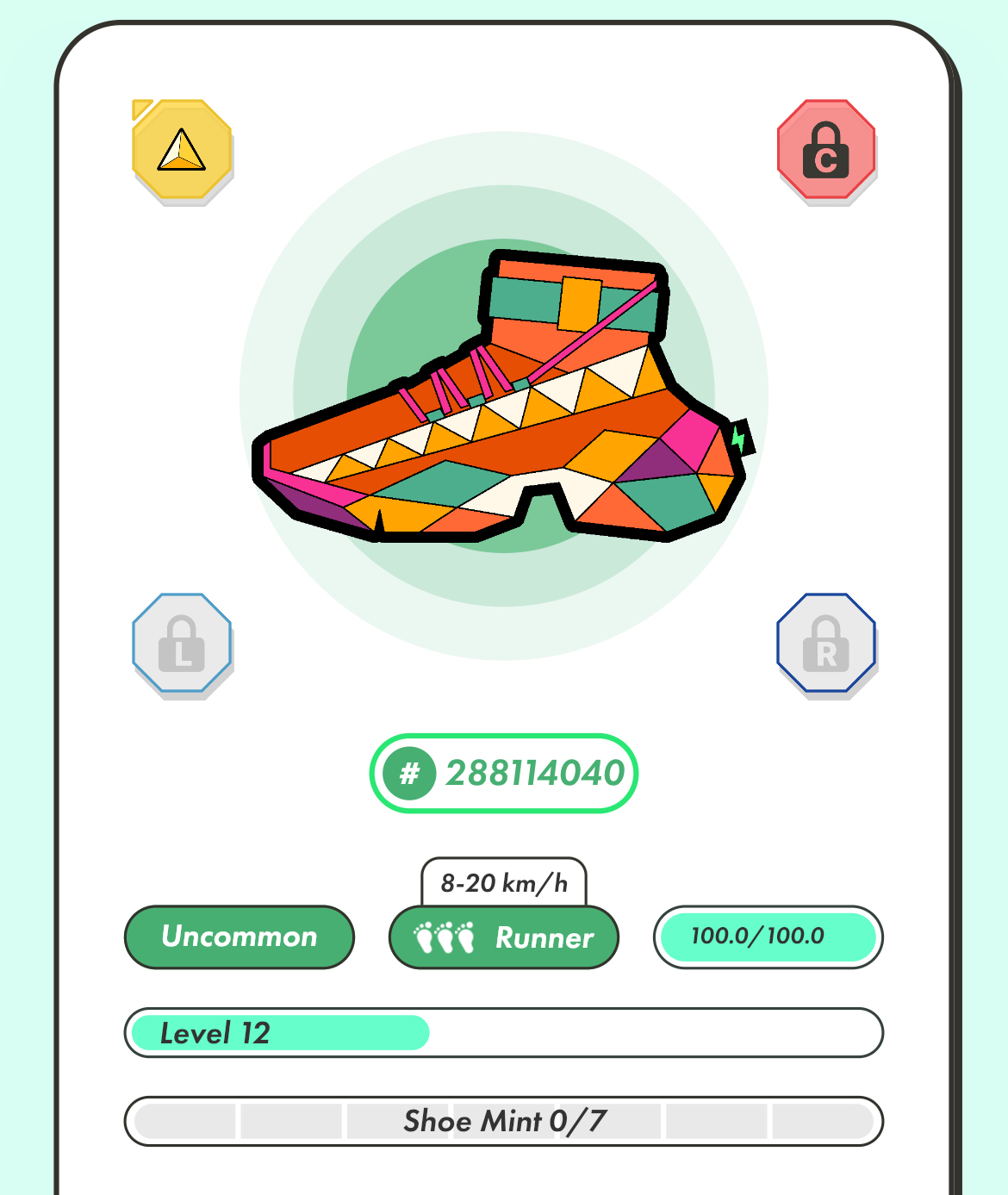
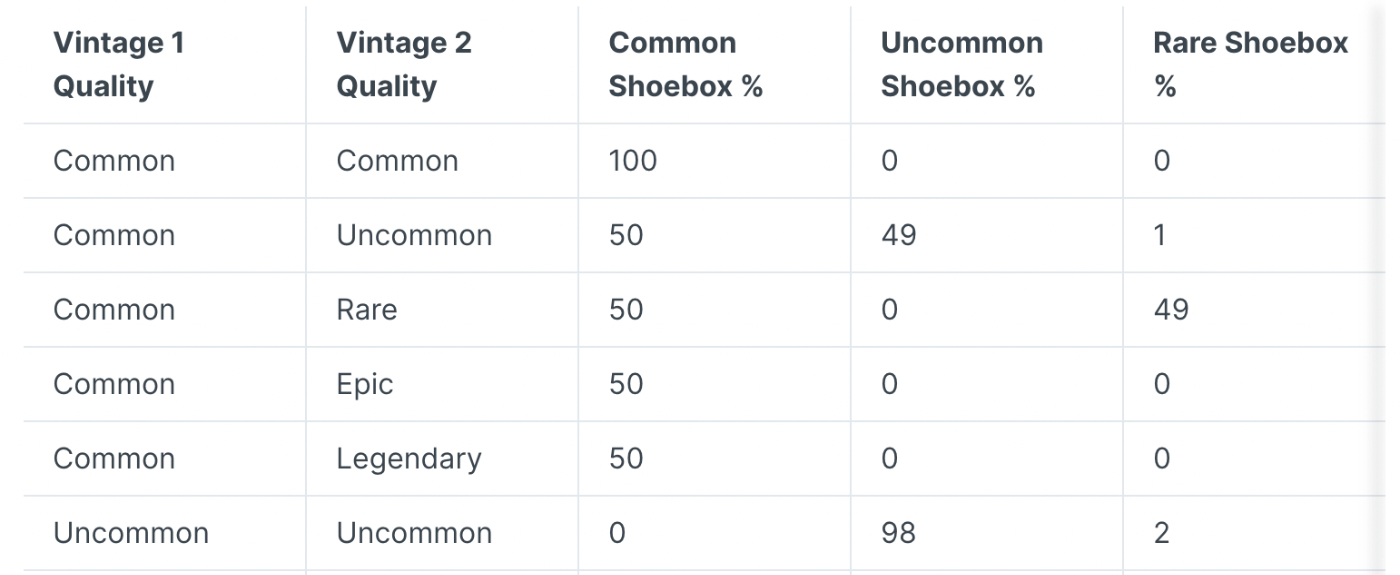



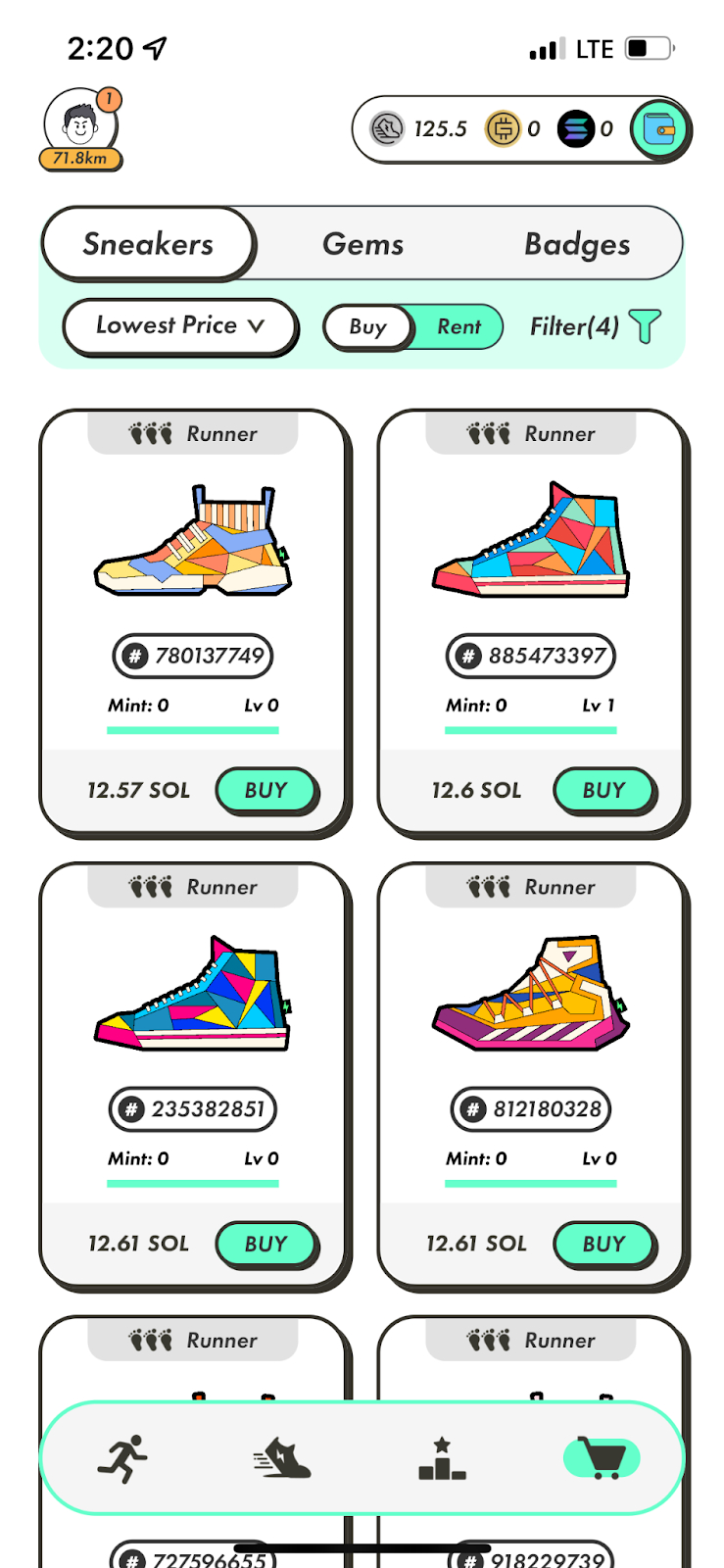
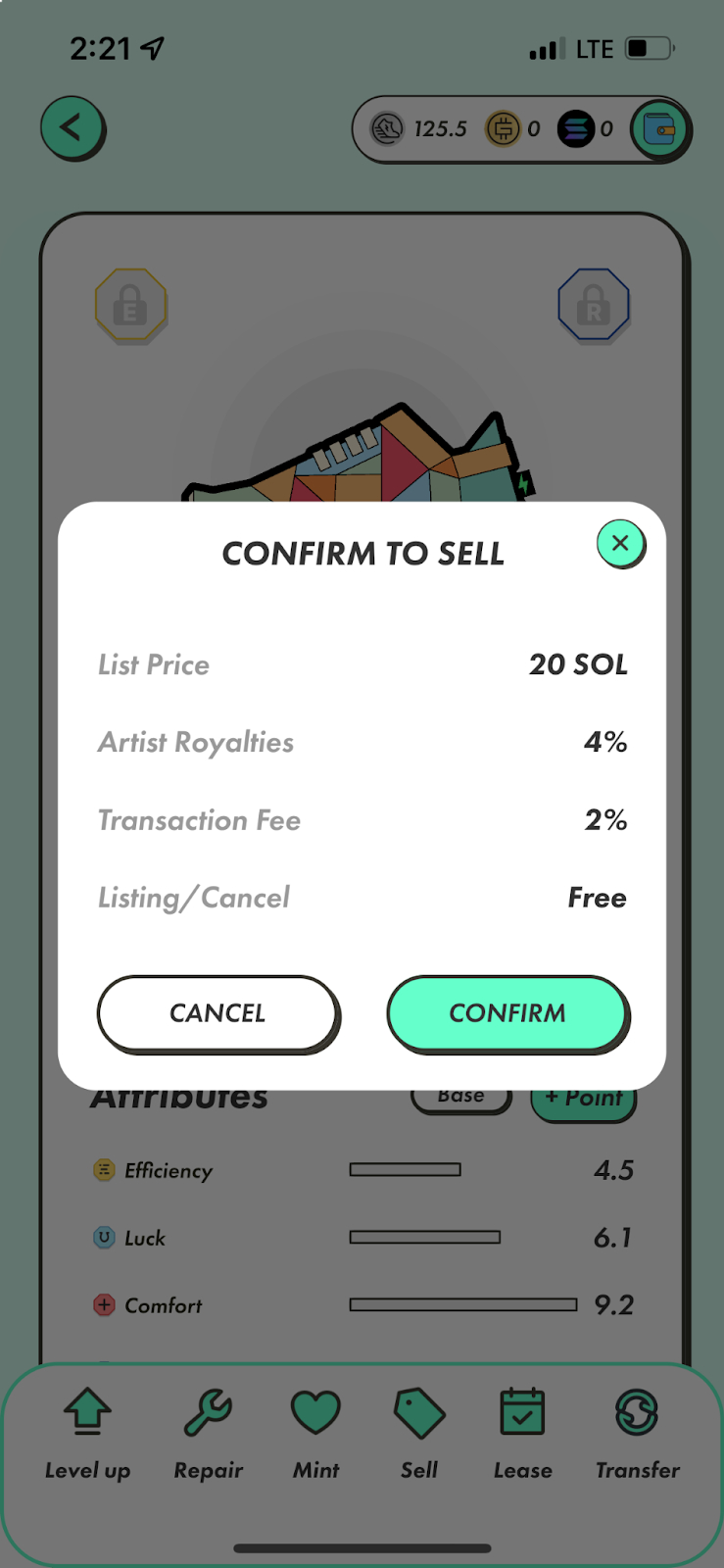
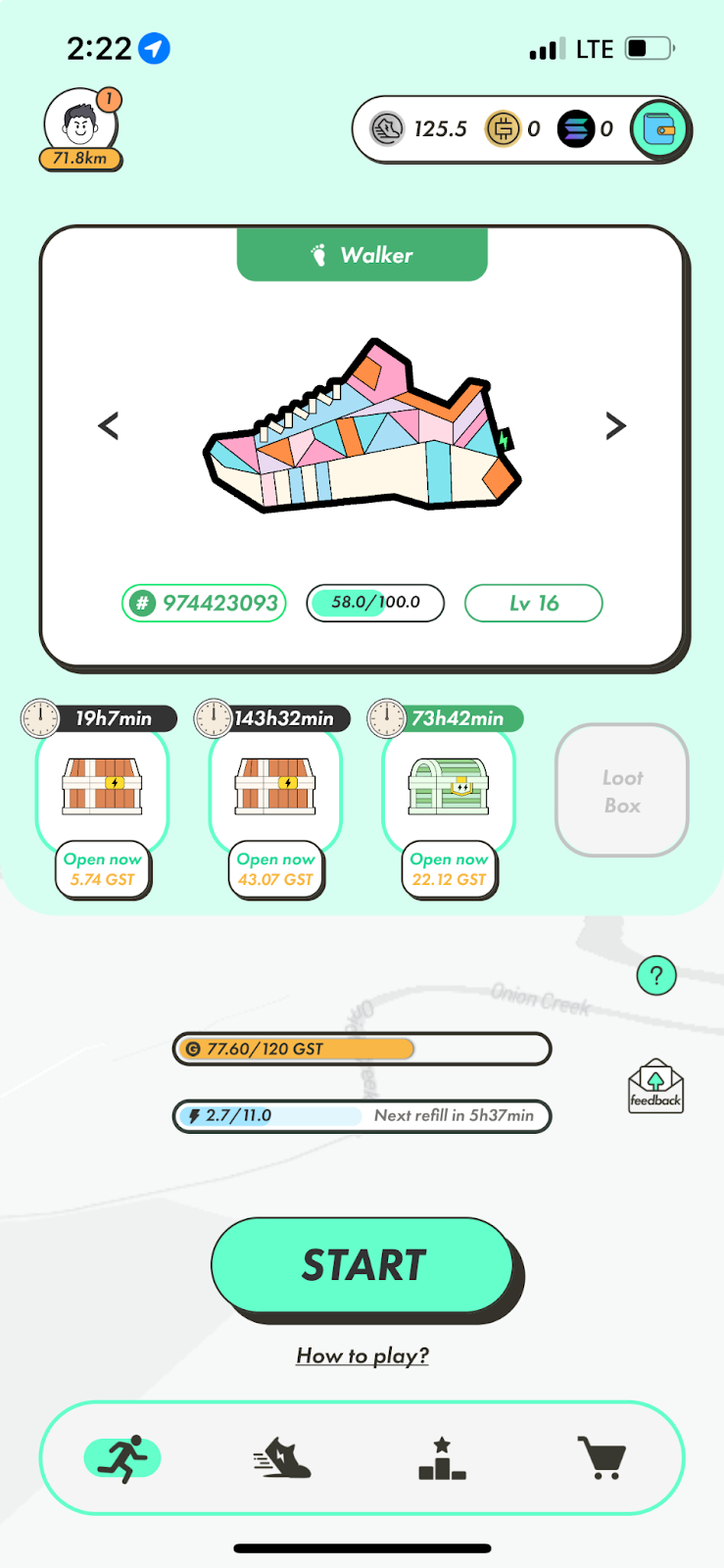
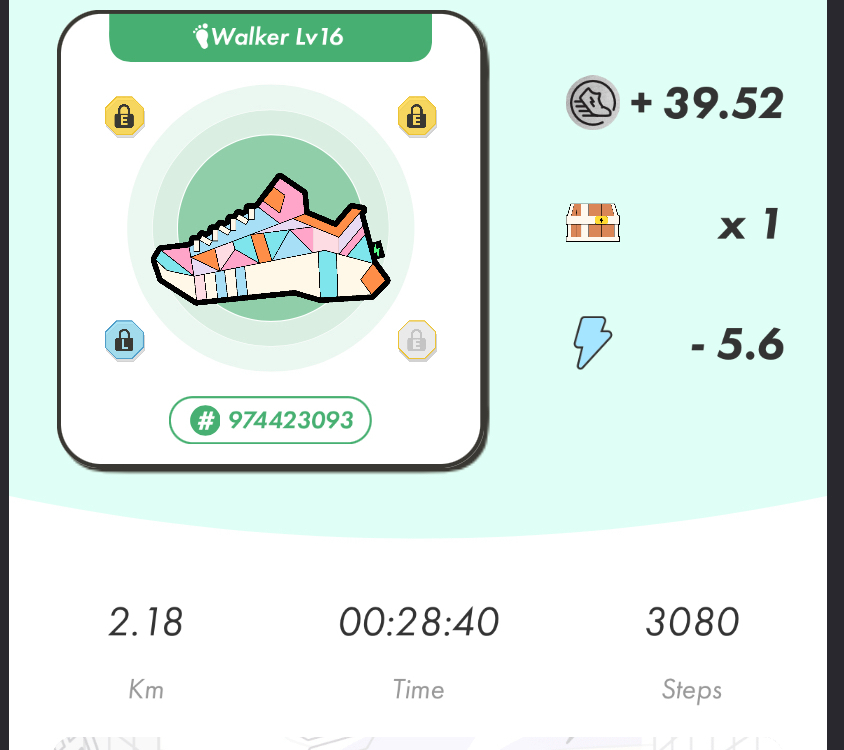
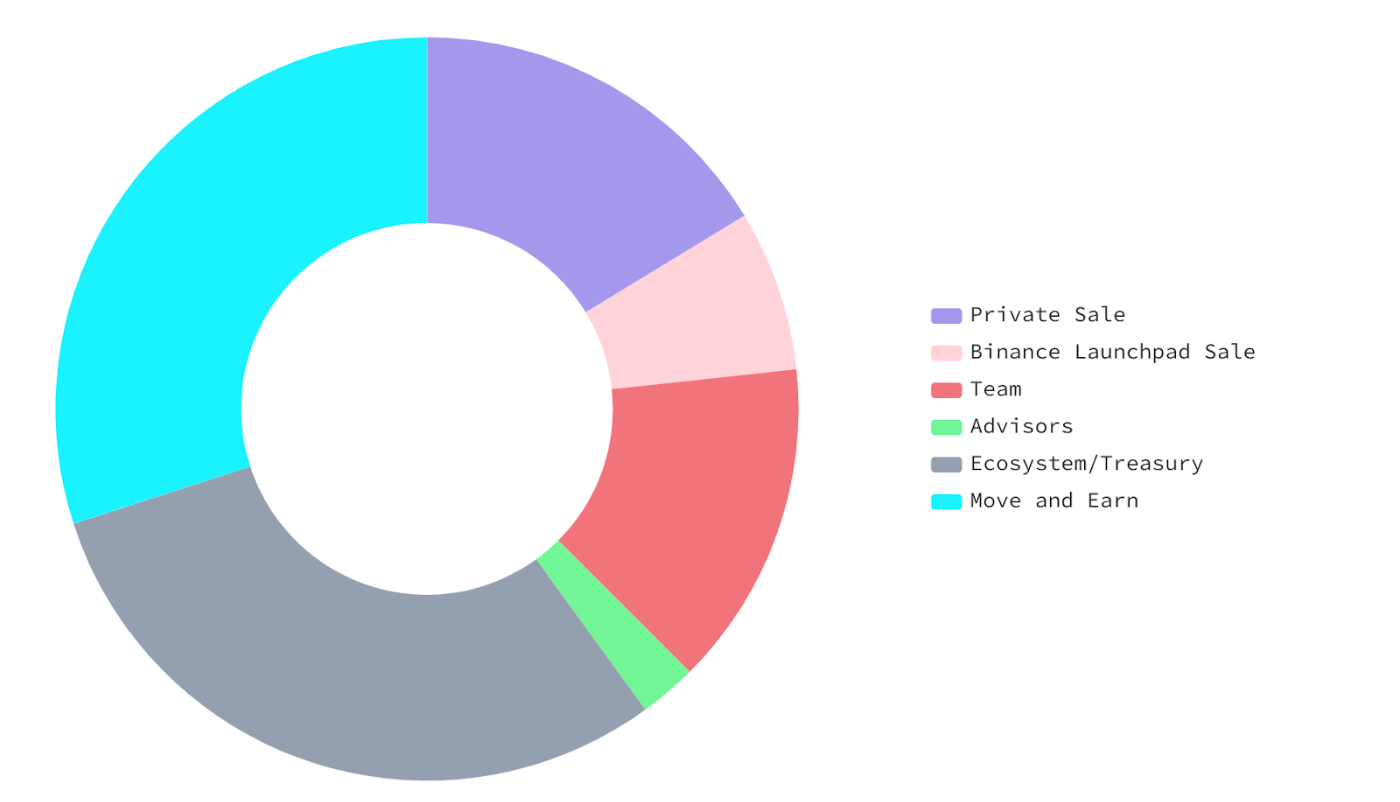
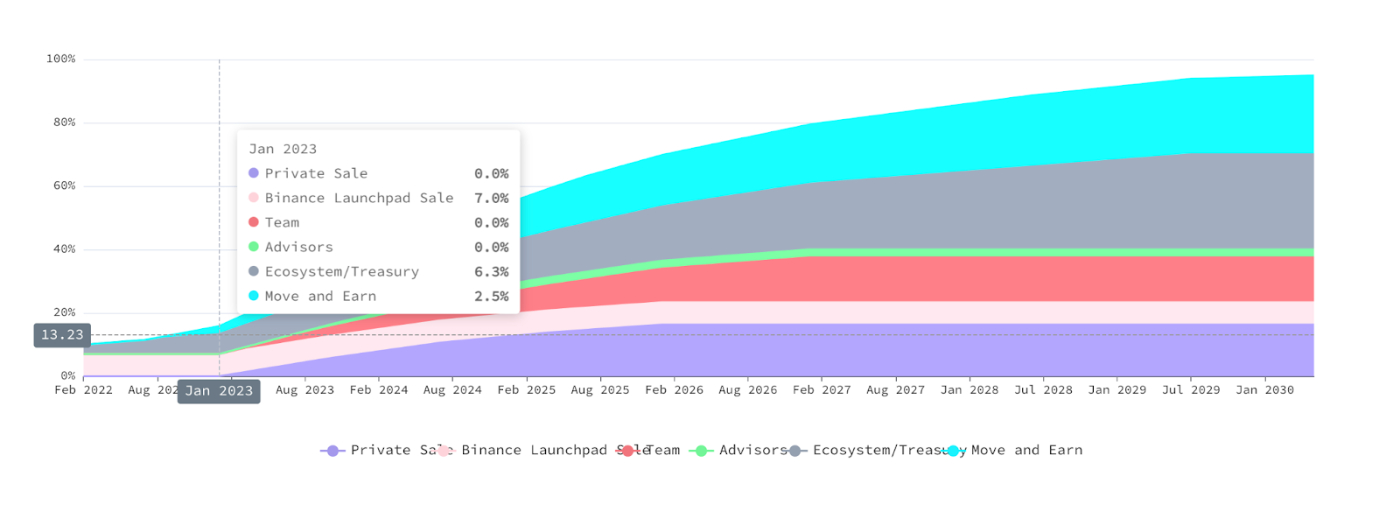







Comments
Don't have an account? Sign up!